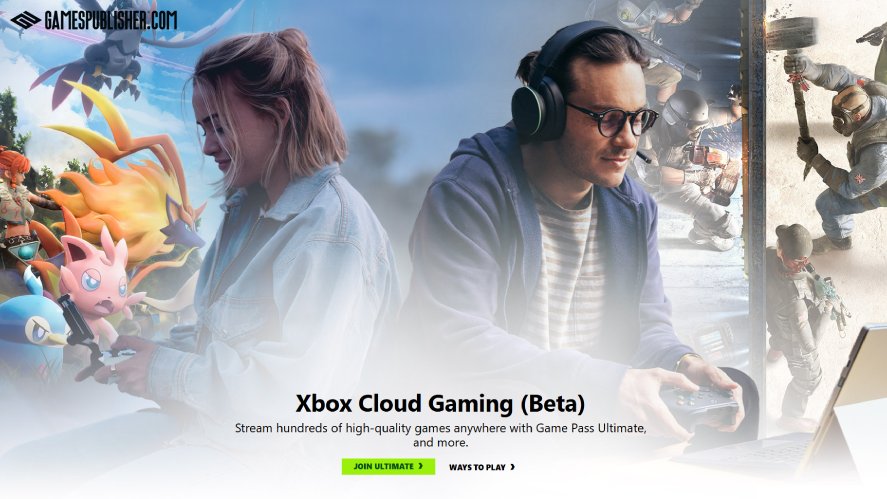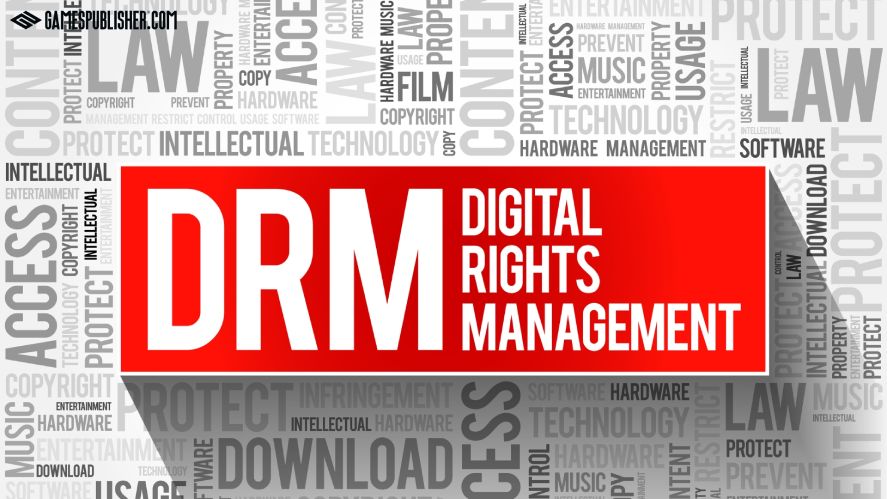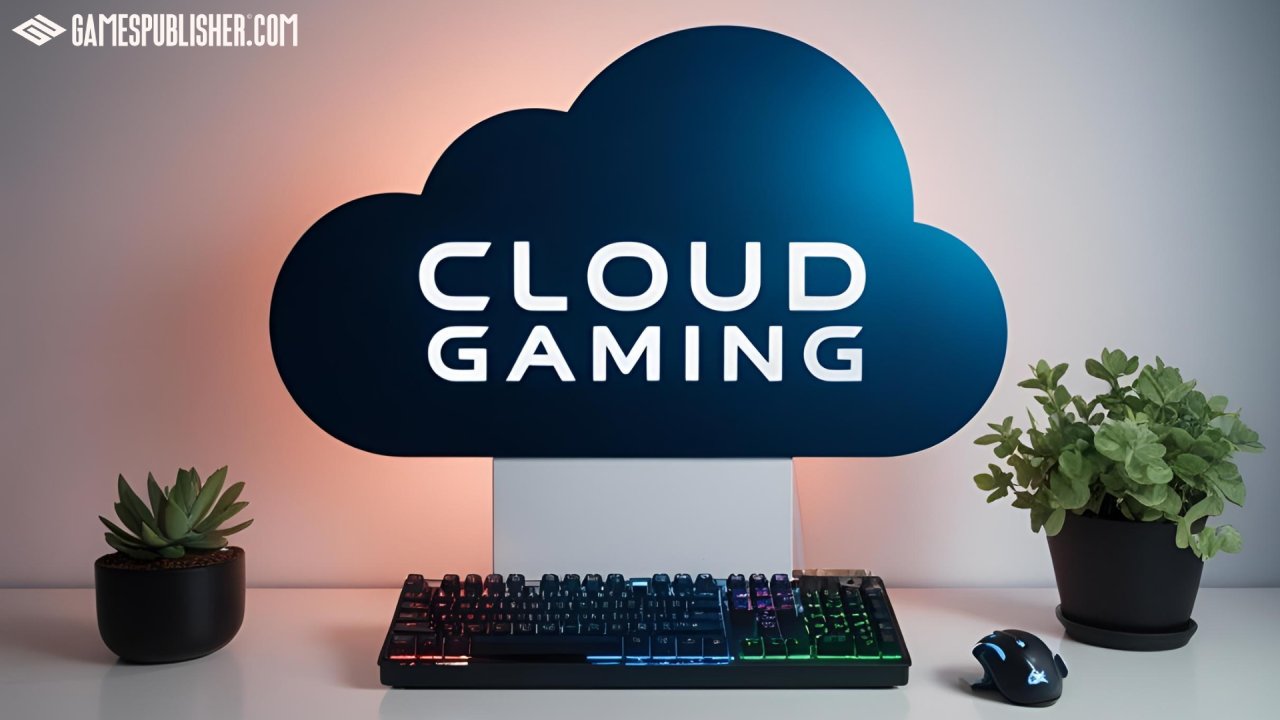Cloud gaming is transforming gaming in 2025, reshaping how game developers, video game publishers, and players connect with video game genres. No longer tied to bulky hardware, games now stream from the cloud, opening new doors for creativity and access.
At Gamespublisher.com, we’re your trusted source for tracking these game publishing shifts. Staying updated on cloud gaming advancements matters for game development and game publishers.
This article explores how cloud gaming is evolving, impacting everything from indie titles to AAA blockbusters.
Cloud gaming: Understanding the Core Technology
As cloud gaming reshapes the gaming landscape in 2025, understanding its core technology is essential for game developers and video game publishers looking to stay ahead.
This section breaks down what makes cloud gaming tick, how it stands apart from traditional setups, and the platforms driving its rise.
What is Cloud Gaming?
Cloud gaming is a system where games run on remote servers, not your device, streaming to you in real time over the internet.
Think of it as Netflix for video game genres. So no downloads, just instant play.

Services like Xbox cloud gaming or PlayStation cloud gaming use powerful cloud gaming PC setups in data centers, delivering game development creations to your screen with a solid connection.
How Cloud Gaming Differs from Traditional Gaming
When comparing cloud gaming to traditional gaming, the differences become strikingly clear, particularly in hardware demands, accessibility, and performance nuances.
Traditional setups require players to own high-end machines to run AAA games, whereas PC cloud gaming shifts that burden to the cloud, meaning even a basic laptop can stream PlayStation cloud gaming titles with ease.
Accessibility skyrockets as a result, as game developers can reach casual players who’d never invest in a $500 console.
However, latency remains a trade-off. While local play offers a near-instant response, cloud gaming might lag slightly depending on your internet, though 2025’s advancements are closing that gap fast.
Key Platforms Powering the Movement
Several platforms drive cloud gaming in 2025.
Google Stadia, despite early stumbles, refines its Steam Cloud gaming-style library. NVIDIA GeForce NOW shines for cloud gaming Nvidia fans, streaming games with top graphics.
Xbox Cloud Gaming brings Microsoft’s catalog to any screen, a hit with Microsoft cloud gaming users.

Amazon Luna grows fast, blending free cloud gaming tiers with premium picks, while emerging i cloud gaming services hint at more to come.
These platforms fuel video game publishers and game developers with new ways to deliver game genres.
Cloud Gaming: Major Advancements in Recent Years
Over the past few years, cloud gaming has evolved from a niche experiment into a cornerstone of gaming, thanks to breakthroughs that enhance performance and accessibility.
These advancements are empowering video game publishers to rethink how game genres reach players, and they’re worth exploring in detail.
Low Latency Streaming and Edge Computing
One of the biggest hurdles cloud gaming once faced was lag. But low-latency streaming powered by edge computing is changing the game in 2025, offering game developers a smoother canvas for their work.
Edge servers, strategically placed closer to players than traditional data centers, reduce the distance data travels, cutting delays to near-local levels.
For video game publishers, this means video game genres like fast-paced action or racing can shine on best cloud gaming service platforms without stuttering, while cloud gaming PC users enjoy real-time responsiveness that rivals dedicated hardware.
5G and Network Infrastructure Improvements
The rollout of 5G and upgraded network infrastructure is supercharging cloud gaming experiences.
With blazing speeds and lower latency, 5G ensures that cloud gaming streams flow seamlessly, even on mobile devices in bustling cities or remote areas.

As a result, game developers can craft game genres with confidence that players worldwide will enjoy them without issues.
This network boost is gradually turning cloud gaming into a universal option, reshaping game publishing strategies for broader audiences.
AI Integration for Real-Time Optimization
Artificial intelligence is another game-changer, weaving its way into cloud gaming to optimize performance in real time.
By leveraging machine learning, platforms like Microsoft cloud gaming dynamically manage bandwidth, adjusting streams to keep video game genres crisp even if your connection falters.
For example, cloud gaming Nvidia uses this tech to render sharp details on weaker devices, a trick that lets game development teams focus on creativity over compatibility.
This seamless optimization not only elevates gaming quality but also simplifies game publishing, ensuring best cloud gaming service platforms deliver consistent experiences across diverse setups.
Cloud gaming: Impact on Game Development
Cloud gaming reshapes how game developers craft and deliver video game genres in 2025. Here’s how it’s changing game development.
Platform-Agnostic Development Trends
One of the most significant shifts driven by cloud gaming is the move toward platform-agnostic development.
Unlike traditional gaming, cloud gaming services allow game development teams to focus on a single, versatile version that streams effortlessly to anything from a high-end cloud gaming PC to a budget tablet.
For instance, a studio crafting an open-world RPG can ensure its lush visuals and intricate mechanics shine on both a smart TV and a phone.
Testing and Deployment in the Cloud
Beyond design, cloud gaming revolutionizes testing and deployment, offering game developers cloud-based pipelines that accelerate game development cycles and enhance quality control.
By leveraging cloud gaming service infrastructure, teams can test video game genres on virtual servers mimicking countless device setups without needing physical hardware for each scenario.

Moreover, deployment becomes a breeze, as updates for PC cloud gaming titles roll out instantly from the cloud, bypassing the slow certification processes of console stores.
For example, a game developer fixing a bug in a multiplayer match can push the patch live via cloud gaming within hours, keeping players engaged with minimal downtime.
This efficiency saves time and resources, letting game developers iterate faster and respond to gaming community feedback in real time.
New Monetization Models for Developers
Perhaps most excitingly, cloud gaming unlocks innovative monetization models that game developers can tap into with ease, thanks to the flexibility of cloud platforms.
Subscription services like Xbox’s Game Pass allow game publishers to bundle game genres into a Netflix-style package, ensuring steady revenue while players enjoy instant access.
Meanwhile, free cloud gaming tiers pave the way for in-game purchases or ad-based revenue, as seen in i cloud gaming experiments where a casual puzzle game might offer cosmetic upgrades or brief ads between levels.
These options not only diversify income streams but also align game development with game publishing trends that prioritize accessibility and player retention over one-time sales.
Cloud gaming: Changing the Publishing Landscape
As cloud gaming matures, it’s not just game developers who benefit. Video game publishers are seeing their strategies evolve in 2025, driven by the technology’s ability to expand markets, secure content, and rethink revenue models.
This shift is redefining game publishing in ways that promise both opportunity and adaptation for game publishers.
Global Accessibility and Market Reach
One of the standout advantages of cloud gaming is its power to extend game publishing into regions where traditional gaming hardware has struggled to take root.
In low-hardware markets, like rural Southeast Asia or parts of Latin America where a $500 console is out of reach, cloud gaming delivers video game genres to players using just a smartphone and a decent connection.
As a result, game developers craft game genres with global appeal, while video game publishers tap into emerging markets, significantly boosting their game publishing footprint without the logistics of physical distribution.
DRM and Security Improvements
In addition to expanding access, cloud gaming offers video game publishers robust tools to protect their content.
By hosting games on centralized servers, game publishers drastically reduce piracy risks compared to traditional downloads, where cracked copies often spread unchecked.

Enhanced DRM ensures that video game genres stay locked to the cloud, accessible only to paying users, while cloud gaming can push security updates instantly to thwart exploits.
Instead of worrying about torrents, a video game publisher using cloud gaming infrastructure can focus on engagement, knowing their game publishing efforts are safeguarded by this centralized shield.
Subscription vs. Ownership Trends
Lastly, cloud gaming is steering game publishing toward subscription models over traditional ownership, a trend that video game publishers are navigating with increasing sophistication.
Platforms like Xbox’s Game Pass lead the charge, offering players a library of game genres for a monthly fee rather than a one-off purchase.
Meanwhile, free cloud gaming tiers with optional subscriptions or hybrid ones cater to varied budgets, blending access with ownership vibes.
This evolution challenges game publishing to rethink value, ensuring cloud gaming feels rewarding in a world where discs are fading fast.
Cloud gaming: Challenges and Limitations
Even with its growth, cloud gaming faces real hurdles in 2025. These challenges affect game developers and video game publishers as they push game publishing forward.
Infrastructure Gaps in Developing Regions
In many developing regions, slow internet speeds pose a persistent barrier to cloud gaming, often disrupting services for players who lack access to modern networks.
For example, rural areas without widespread 5G struggle to support cloud gaming, resulting in choppy streams that frustrate users.
Until governments and providers invest in better infrastructure, game publishers face the ongoing challenge of reaching these underserved markets with consistent quality.
Game Quality and Resolution Trade-offs
Bandwidth can mess with cloud gaming PC quality, and low speeds drop gaming visuals from sharp to blurry.

As a result, game developers see game genres suffer on weaker networks. Players get frustrated with lag or pixelated screens.
Pricing Models and Consumer Acceptance
Pricing trips up cloud gaming too. Subscriptions like Xbox cloud gaming feel pricey if lag hits. Meanwhile, free cloud gaming leans on ads, which annoys some.
Video game publishers fight to balance cost and value. For instance, players resist paying without owning games. Some prefer discs over streams, making game publishing tricky in 2025.
Cloud gaming: Future Predictions and Industry Outlook
Cloud gaming is charging toward a bold future in 2025 and beyond, reshaping gaming for game developers and video game publishers.
Here’s what’s on the horizon.
Cloud-Native Games and Development Tools
The arrival of cloud-native games represents a shift from traditional ports, leveraging cloud power to create expansive video game genres that game developers can tailor for maximum impact.
For example, Xbox cloud gaming might soon host massive, server-driven worlds that evolve in real time, while Microsoft cloud gaming could introduce development tools enabling game development teams to collaborate online, tweaking game genres together from anywhere.
This approach not only enhances creativity but also accelerates game publishing timelines for game publishers eager to capitalize on cloud potential.
Integration with AR/VR and Metaverse Platforms
As cloud gaming integrates with AR/VR and metaverse platforms, it’s set to play a crucial role in delivering immersive gaming experiences.

Cloud servers power the heavy rendering, keeping devices lightweight yet capable of rich visuals while connecting players to shared game genres in sprawling metaverse environments supported by cloud gaming.
This synergy allows game publishers to craft interconnected virtual worlds where communities thrive, marking a significant leap forward in 2025 and beyond.
The Role of Blockchain and Ownership Models
The potential synergy between blockchain and cloud gaming could redefine ownership, offering game developers and video game publishers fresh avenues to engage players through game publishing innovations.
By integrating NFTs, platforms like Steam cloud gaming might allow players to own unique i-cloud gaming items, adding tangible value that game publishers can monetize.
This model incentivizes player investment and opens new revenue streams, blending cloud gaming accessibility with the allure of digital ownership in a way that reshapes gaming economics.
Conclusion
Cloud gaming advancements in 2025 are rewriting the gaming playbook, from lag-free streams to global reach. For game developers, it’s a chance to craft video game genres unbound by hardware, while video game publishers tap new markets and models.
These shifts promise a dynamic game publishing future. Staying ahead matters, so game publishers and game developers should explore cloud gaming innovations now.
At Gamespublisher.com, we’ll keep you posted on how cloud gaming unfolds. So, dive in and shape the next wave!
Loading survey...

